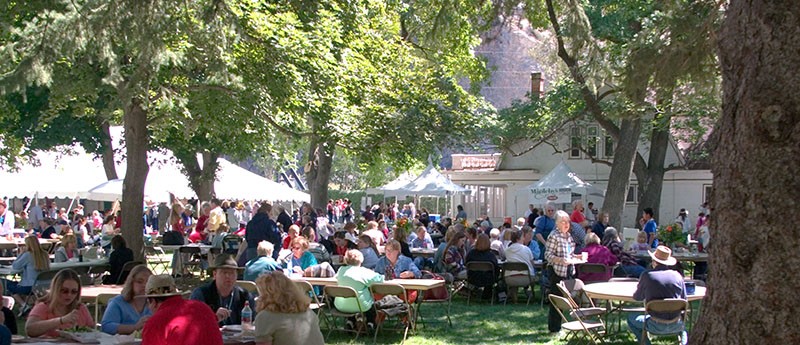
by Kim McCloskey | Aug 15, 2018 | About Storytelling, Benefits of Storytelling

A couple of weeks ago, a friend said to me, “Haven’t you been with the Timpanogos Storytelling Festival since the start? Why?” I stammered for a few moments and finally gave a pretty lame answer, “I just really like it.”
Now that I’ve thought about it for a while, I’d like a do-over—you know, a second chance to answer and maybe sound like a grown up. I have attended every Festival, and have worked on the committee, in some capacity for 28 of its 29 years. If you’re doing something for that long, you better have a really good reason—or two.
When the Festival began, I was a young mother juggling an 11-year old, a 9-year old, and 2-year old twins. I was swamped with the everyday work of raising a family and I was losing myself somewhere between the laundry and the dirty dishes. My good husband saw an article in the newspaper about an event in the Ashton’s yard and offered to take a day off so we could go. My mother watched the twins for us and on a sunny August Friday morning in 1990, we went. As I sat in the front row, storyteller Judith Black told a story I can repeat to this day about a rabbi who, when faced with accounting for his life, was chastised because he had not become his own true self.
The story was, for me, like a shaft of light from above. Becoming my own true self! That concept changed my perspective, my goals, my outlook on life. I had to be a part of this, this . . . group of people. Storytellers? Well, whatever. This is where I belonged. So I volunteered.
As my children grew, so did my involvement. The children began to hear the stories as we came as a family. It became Our Annual Event. We referred to it simply as ‘The Festival.’ Our family lexicon referenced stories we had heard together like other families reference movie quotes. We talked about storytellers as if they were part of our extended family. We quoted them, we sang 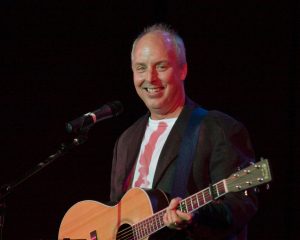 their songs (thank you so much, Bill Harley, for “Black Socks!”), we laughed at their jokes again and again and learned about other perspectives and cultures. Slowly and surely, the stories provided a safe framework for our family discussions and conversations.
their songs (thank you so much, Bill Harley, for “Black Socks!”), we laughed at their jokes again and again and learned about other perspectives and cultures. Slowly and surely, the stories provided a safe framework for our family discussions and conversations.
And the children grew up. They tend to do that. Without my permission, they became teenagers. Who wants to go to a storytelling festival when you’re a teenager? They did! Who knew? They brought friends and they’d take off, listening to stories and finding their own adventures. At the end of the first day of stories, we’d compare notes and plan our schedules for the next day.
Then they had the nerve to grow up and leave home. What were they thinking? But guess what happened? They came back. First with boyfriends (we have four daughters), and then with husbands who have also learned to speak Storytelling. And now, even grandchildren. Three generations of us speak Storytelling and reference story quotes like other families reference movies.
So, why have I stayed with the Timpanogos Storytelling Festival for 29 years? Why have I faithfully followed from the Ashton’s yard, to the Olmsted, to Mt. Timpanogos Park, to Thanksgiving Point? Because of family—the family I have raised, and the family I have gained through these annual “family reunion” storytelling festivals. I belong here—these are my people; my tribe, if you will. The people who are willing to put down the electronic screens, look in human faces, and hear hearts speaking. People who will sing along with strangers, laugh with people they’ve never met, and cry a little sometimes with someone who is just about to become a friend. People who will talk to others in line, people who will help just because, and people who are storytellers both onstage and off. I come back, I volunteer, I look forward to The Festival because it is family—that “sittin’ on the front porch with yore folks” feeling that is so strong no matter where The Festival is held. Because of love and family, frankly. Well, that and the peaches and ice cream!
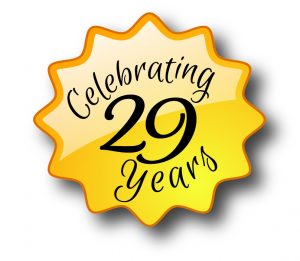
Join us at the 29th annual Timpanogos Storytelling Festival September 6-8 at the Ashton Gardens at Thanksgiving Point in Lehi, Utah.
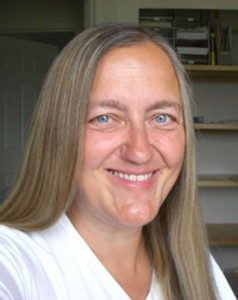
by Kim McCloskey | Aug 12, 2018 | About Storytelling
 I was privileged to meet Terri McGuire while she was teaching at the former Meridian School in Provo and I just can’t say enough about what an amazing teacher she is. Her classroom was truly a magical place. Each school year began with a trip to the Timpanogos Storytelling Festival, and now retired after nearly 40 years, this award-winning teacher tells us how she first became a fan of the festival and how she used her experience to create memorable teaching and learning moments in the classroom.
I was privileged to meet Terri McGuire while she was teaching at the former Meridian School in Provo and I just can’t say enough about what an amazing teacher she is. Her classroom was truly a magical place. Each school year began with a trip to the Timpanogos Storytelling Festival, and now retired after nearly 40 years, this award-winning teacher tells us how she first became a fan of the festival and how she used her experience to create memorable teaching and learning moments in the classroom.
*************************************************************************************
Terri McGuire
In late August of 1990 our family had just moved to American Fork, Utah. My children were starting elementary school, my husband was embracing a new career as a pipe organ builder, and I had found a part-time teaching job. This left me with a bit of time on my hands to explore this interesting new place we were living. I’ve always enjoyed stories, arts, and history, so I often found myself wandering into local libraries. 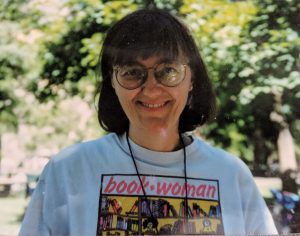
When I walked into the Orem Public Library one morning I saw advertisements for the second annual Storytelling Festival to be held at Ashton Gardens and asked the librarian to tell me more. She said the money they earned from the event was going to help the library rebuild the children’s section of the library. This sounded like a wonderful mix of the things I enjoy most! I knew I wanted to attend, but the first day of the festival was a school day, so I went by myself.
I had experience with storytelling, and thought I understood what I would experience. I’d been a Girl Scout and native legend storyteller as a youth. I’d used folk tales and storytelling a bit in my classroom to teach. And, I had grown up in a family that loved telling their history stories. I planned on having a fun time.
What I didn’t know was how deeply this event would move me. I was totally unprepared for the depth of feeling, the love of story, the sense of community, and the celebration of truly gifted tellers. I heard traditional stories, song stories, history stories, family stories, ghost stories, humorous stories, and folk tales. Jugglers, musicians, puppeteers, and performers added to the experience. I was amazed, and I was hooked!
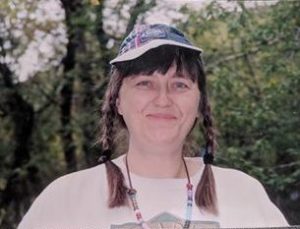 Even though I was still a newcomer to Utah and I attended alone, for that afternoon I had the feeling of coming home. I was part of this storytelling experience. You do not just listen to a story of this caliber. The audience is required to participate with mind and emotions, living the story along with the teller. I found that when the teller was done, the story wasn’t over for me. Those tellers of tales had touched me deeply, because their stories had merged with my life stories.
Even though I was still a newcomer to Utah and I attended alone, for that afternoon I had the feeling of coming home. I was part of this storytelling experience. You do not just listen to a story of this caliber. The audience is required to participate with mind and emotions, living the story along with the teller. I found that when the teller was done, the story wasn’t over for me. Those tellers of tales had touched me deeply, because their stories had merged with my life stories.
The next day, I brought my children to the storytelling festival. By the next year, I had a full time teaching position and started bringing my students each year to the festival. Stories allow us the chance to understand how connected we are. They help us to understand how to speak, to write, know our place in history, to share feelings and what is important to us.
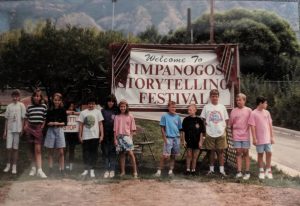
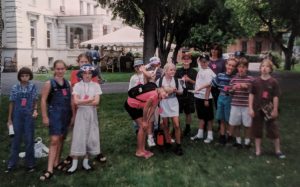
Over the years, I have incorporated storytelling into my classroom in a variety of ways. After a day-long visit to the storytelling festival, where we heard the wonderfully told stories of others, we began each school year by telling each other our own stories. Our personal history and family histories have roots in our cultural heritage and give us the power to connect with others. This created interpersonal connections in our classroom, which were akin to a strong handshake and helped us to understand each other much better.
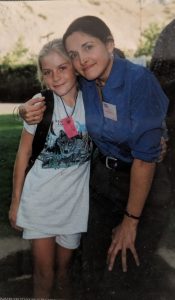 Listening to masterful storytellers tell their tales via CD or video, gave us a combined cultural experience of storytelling. Different storytellers demonstrated their talents for us over many days and through many tales. We identified a list of skills and practices of good storytellers, which we used as touchstones for creating our own interpretations and connections to what we were studying. Storytelling allowed us to think deeply about those critical skills. We learned to incorporate and consider such as things as: audience, voice, facial expressions, body movement, music, pauses, tone, etc. to better share our message.
Listening to masterful storytellers tell their tales via CD or video, gave us a combined cultural experience of storytelling. Different storytellers demonstrated their talents for us over many days and through many tales. We identified a list of skills and practices of good storytellers, which we used as touchstones for creating our own interpretations and connections to what we were studying. Storytelling allowed us to think deeply about those critical skills. We learned to incorporate and consider such as things as: audience, voice, facial expressions, body movement, music, pauses, tone, etc. to better share our message.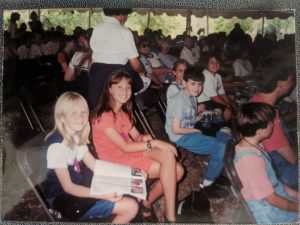
Some of the specific activities we experienced that were enhanced by storytelling were:
Students practiced storytelling skills and presented earliest memory stories and personal favorites at a storytelling sleepover at our school.
We incorporated family stories and cultural connections into a Cultural Fair presentation. Through cross-generation interviews and research, students discovered their personal connection to family and history. These personal stories became the basis of comparison for all the other stories we encountered during the year.
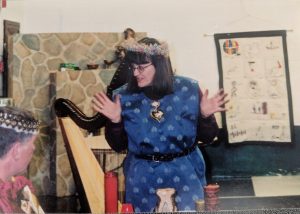 In October, we began our study of ancient civilizations, we searched for and shared likely stories based on location of artifacts we found in an archeology dig.
In October, we began our study of ancient civilizations, we searched for and shared likely stories based on location of artifacts we found in an archeology dig.
When we retold stories of mythology and historical events, students created freeze-frame tableaus, Instant character reenactments, and told the story from different points of view.
We created “This is Your Life” game show presentations of personal stories of Civil War celebrities, and a “Walk Through Time” historical museum, where students retold the stories of important people in history.
Students created storytelling math problems with optional solutions. More than a word problem, these were designed to tell the whole story and highlight a math concept.
For reviews, we created current-day newscasts, newscasts from the past, podcasts, cartooning summaries, puppets shows, plays, picture books, and photo essays to demonstrate connections and retell the essence of a story.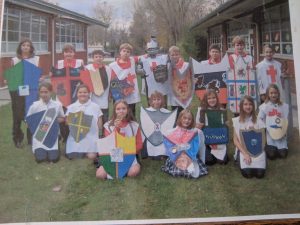
We hosted a Renaissance guild fair, a Medieval banquet, and a Civil War battle reenactment to inform our school community and adults about the culture, stories, and characters of these times in a retelling of what we had learned.
As we explored the aspect of Voice in writing, we asked questions like “What would Donald Davis do?” “How would Bill Harley write this?” In other words, “Can I see this from another perspective?” “Can I make it better?”
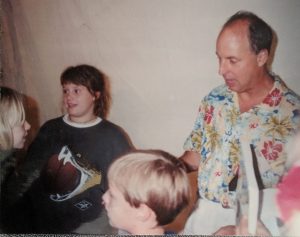 As the year progressed, we found ourselves continually finding new reasons to tell stories and use these skills. I believe it helped my students to find deeper, more meaningful connections to what we studied. We all participated fully in the story our class was creating, because storytelling gave us all a voice, gave us all permission.
As the year progressed, we found ourselves continually finding new reasons to tell stories and use these skills. I believe it helped my students to find deeper, more meaningful connections to what we studied. We all participated fully in the story our class was creating, because storytelling gave us all a voice, gave us all permission.
I am now retired, but still love coming to the festival. My husband attends with me and enjoys it as much as I do. The hardest part for us is trying to figure out whether we should revisit our favorite tellers to hear stories that warm our hearts and make us laugh, or whether we should try for a new adventure with a teller we haven’t yet met. We are always entertained, always feel warmly welcomed, always participate with abandon, and are left with memories that touch our hearts and a lingering sense of wonder.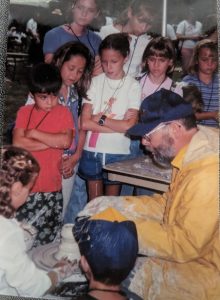
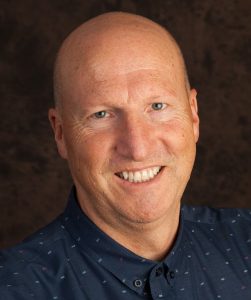
by Kim McCloskey | Aug 9, 2018 | About Storytelling
 Paul Stout is a Utah businessman who appreciates the value of a good story. He has been attending the Timpanogos Storytelling Festival with his family since its inception at the Ashton’s home in Orem over 20 years ago. They were initially invited by his mother-in-law, Sharon Kresge, who was a librarian at the Orem City Library (now retired). After the first story, they were hooked.
Paul Stout is a Utah businessman who appreciates the value of a good story. He has been attending the Timpanogos Storytelling Festival with his family since its inception at the Ashton’s home in Orem over 20 years ago. They were initially invited by his mother-in-law, Sharon Kresge, who was a librarian at the Orem City Library (now retired). After the first story, they were hooked.
Paul says, “This has become a family tradition. We always get a family pass (plus sometimes a few individual passes) so all our children can attend. We look forward to it as the final big event of the summer. More than anything, it’s the stories and amazing storytellers that bring us back. Even if we’ve heard the same story many times, we still love hearing it again. For example, we’ve probably heard Donald Davis tell “Peas and Carrots” at least a dozen times live and another dozen times on CD in the car, and we never grow tired of it. It’s a classic, along with almost all Donald Davis stories, along with those from Bill Lepp, Carmen Deedy, Kevin Kling and many others.”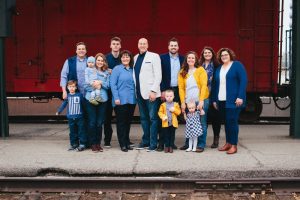
We recently asked Paul if he thought his experience with the festival, or with other storytelling events, has helped him in his profession, other than being a respite from a busy workweek? If so, how?
“Absolutely! In my profession as a sales VP for large technology company, I often give presentations to audiences from 10 to 1,000 people. And over the years I’ve adapted my style, based on what I’ve learned from the Timpanogos master storytellers.
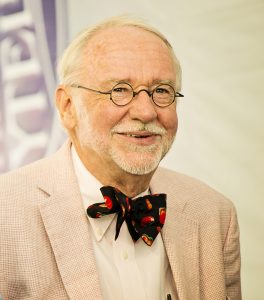
I learned from Donald Davis that people don’t want long, flowery sentences about esoteric subjects. People like to hear down-home, easy-to-understand stories about real-life people having real-life experiences. Donald Davis jumps right into a story without any mood setting or lengthy descriptions.
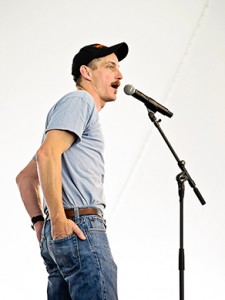
I learned from Bill Lepp that a “little” exaggeration makes for a better story.
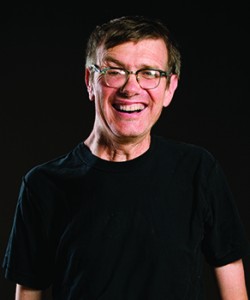
I learned from Kevin Kling that when I share my background (good and bad) with my audience, they tend to appreciate my message even more.

I learned from Carmen Deedy that talking about my relatives is a great way to build a relationship with my audience … because WE ALL have one of THOSE relatives! ”
Have your learned something from a master storyteller? How has the Timpanogos Storytelling Festival enhanced your life? Let us know in the comments below. Tickets for this year’s storytelling festival are available now. I hope to see you there!

 their songs (thank you so much, Bill Harley, for “Black Socks!”), we laughed at their jokes again and again and learned about other perspectives and cultures. Slowly and surely, the stories provided a safe framework for our family discussions and conversations.
their songs (thank you so much, Bill Harley, for “Black Socks!”), we laughed at their jokes again and again and learned about other perspectives and cultures. Slowly and surely, the stories provided a safe framework for our family discussions and conversations.

















